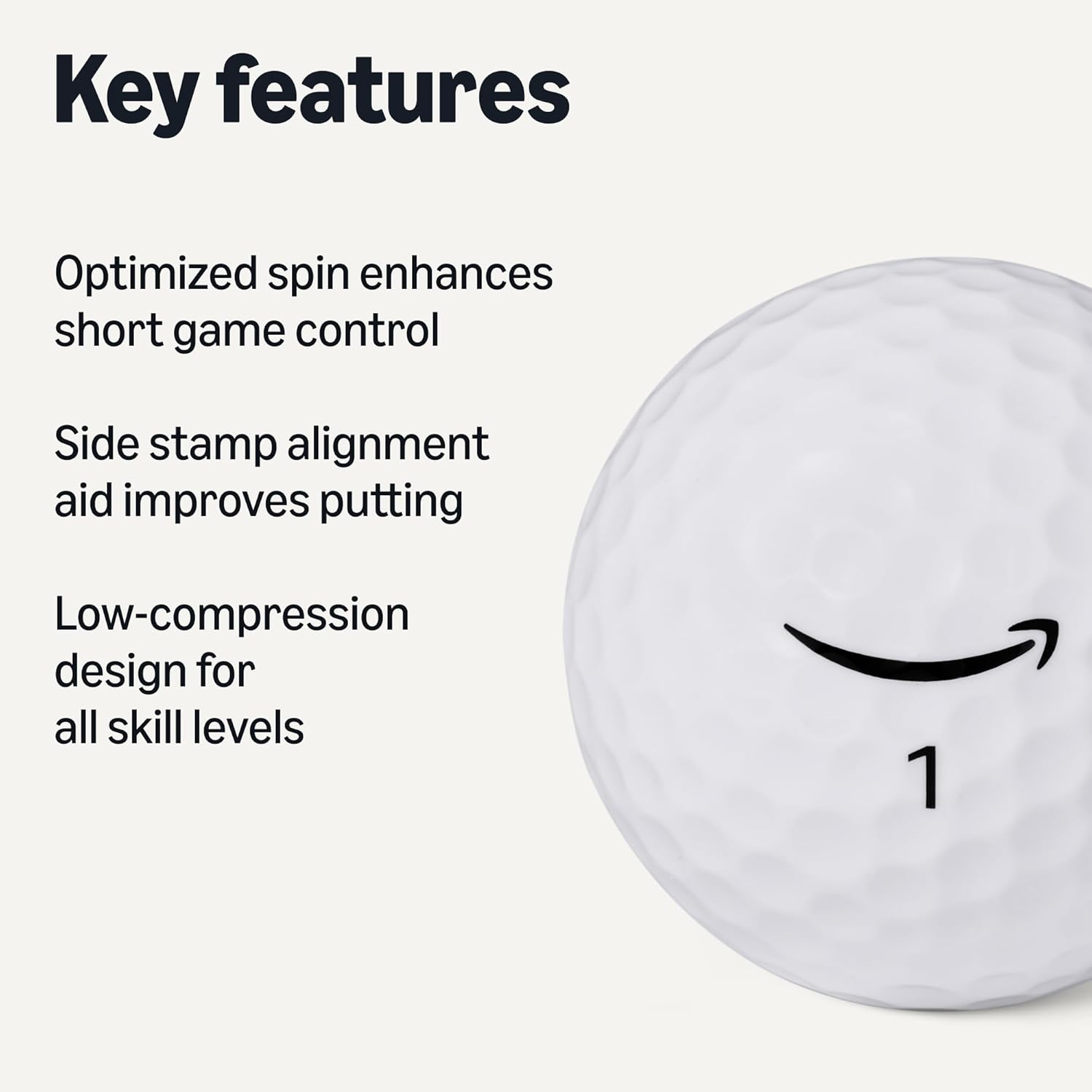Home » Golf News » 5 Surprising Things About Amazon Basics Golf Balls

Most of us browse Amazon without much thought — clicking through pages for batteries, coffee pods, or the occasional golf gadget. But every so often, even the most ordinary product page offers a fascinating glimpse into where business, technology, and golf retail are headed next.
Take, for example, the Amazon Basics golf ball. On the surface, it’s just another entry in the online megastore’s endless lineup. But look closer, and this single listing reveals five trends reshaping not only e-commerce — but also how we buy golf equipment.
1. Price Positioning – “The $1 Golf Ball Strategy”
Amazon’s approach to golf starts with a price that’s impossible to ignore: $24 for a 24-pack — exactly one dollar per ball. That simple, round price is no accident. It’s psychological precision: a clean benchmark that feels affordable yet premium compared to low-end bulk balls. In a category long dominated by loyalty and marketing, Amazon’s quiet entry shows how pricing can become a brand in itself — precision through simplicity.

2. The ‘Everything Store’ Is Coming for Niche Hobbies.
The listing makes it clear: these golf balls are “USGA conforming”, meaning they meet official tournament standards. That small phrase signals a big move — Amazon isn’t just dabbling in golf accessories; it’s entering the competitive, performance-driven world of golf gear.
By targeting hobbyist markets like golf, Amazon’s “Basics” line is expanding far beyond light bulbs and HDMI cables. The company is positioning itself to challenge legacy brands like Titleist, Callaway, and TaylorMade in spaces where loyalty and passion traditionally drive sales.
3. A Single Product for Every Skill Level.
In a market defined by hyper-segmentation, Amazon’s strategy is to capture the entire audience with a single, simplified value proposition:
“Well-suited for all skill levels, from beginners to experienced players, providing consistent performance across all clubs”. This reflects a core Amazon philosophy: simplify choice and engineer a “good enough,” high-value product that can capture the largest possible segment of the market, sidestepping the niche marketing common to the industry.
4. Premium Features are Trickling Down to Budget-Friendly Gear.
The product details highlight a “Side stamp alignment feature” designed to help golfers aim putts more accurately. But the premium creep goes deeper than just features. The ball’s “ionomer” cover, mentioned in the technical details, is an industry-standard material used in many performance-oriented golf balls. The inclusion of both established materials and convenient features is proof of Amazon’s strategy to commoditize quality, neutralize the material-science advantages of legacy brands, and reset consumer expectations at the value tier.
5. Trust is Built on Metrics, Not Marketing.

Instead of relying on professional golfer endorsements, Amazon Golf Balls leverage a proprietary model for generating consumer trust. It displays a “Top Brand: Amazon Basics” box that highlights key platform metrics:
• Highly Rated: 100K+ customers rate items from this brand highly
• Trending: 100K+ orders for this brand in past 3 months
• Low Returns: Customers usually keep items from this brand
This transforms platform metrics into a powerful form of automated social proof, creating a “data moat” around its private-label products. A competitor like Tileist or TaylorMade can buy ads, but it cannot natively display “100K+ orders” on the digital shelf. It’s an unassailable competitive advantage that only the platform owner can deploy.
Conclusion: The Future of Retail is in the Details
These details aren’t isolated curiosities; they are a vertically integrated strategy. Amazon uses its logistical dominance to pre-position products (Point 1), enters niche markets with a “good enough” offering (Point 2 & 3), neutralizes incumbent advantages by standardizing previously premium features (Point 4), and then uses its proprietary platform data to build trust and close the sale (Point 5).
The bigger question for all of us is – do these things fly straight? As we all know, that is unfortunately up to the golf gods.
![]()
![]()
![]()
![]()
![]()







